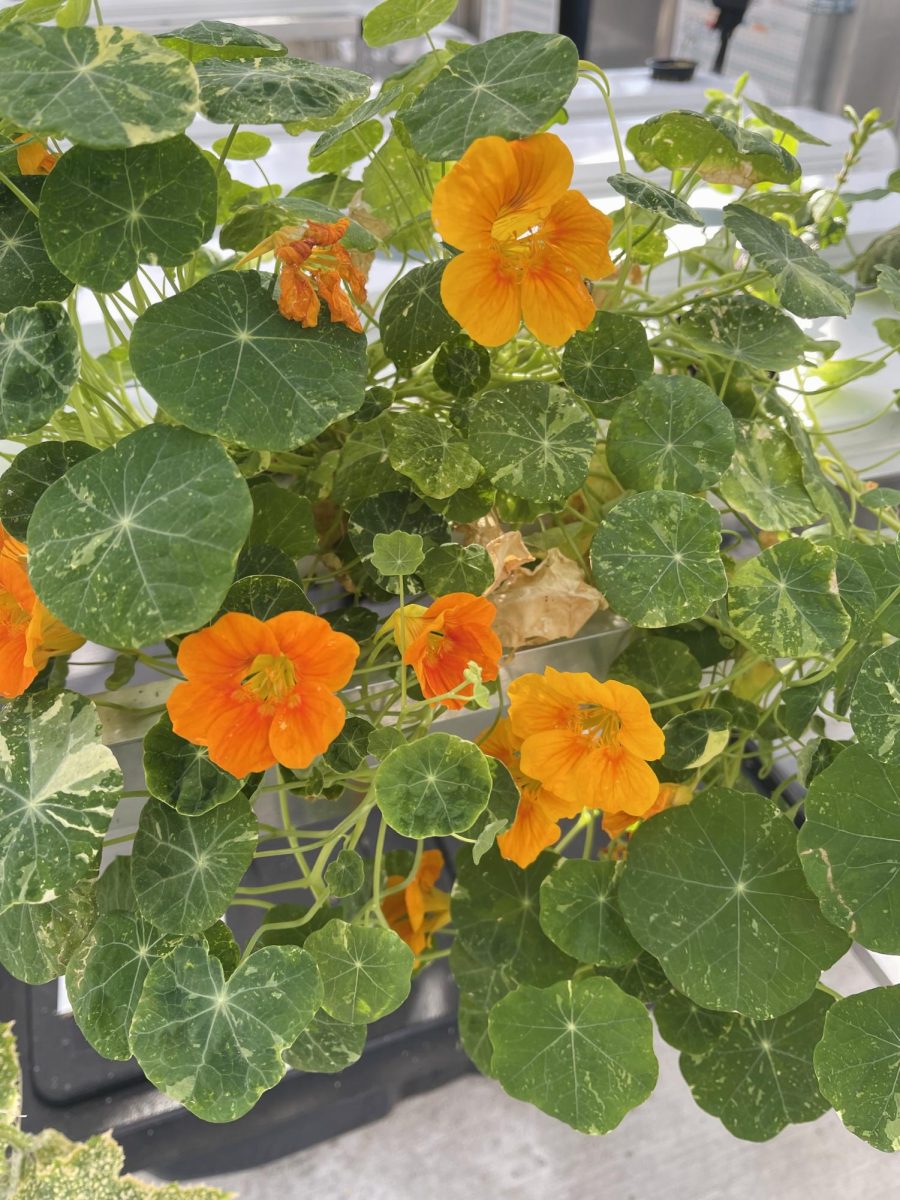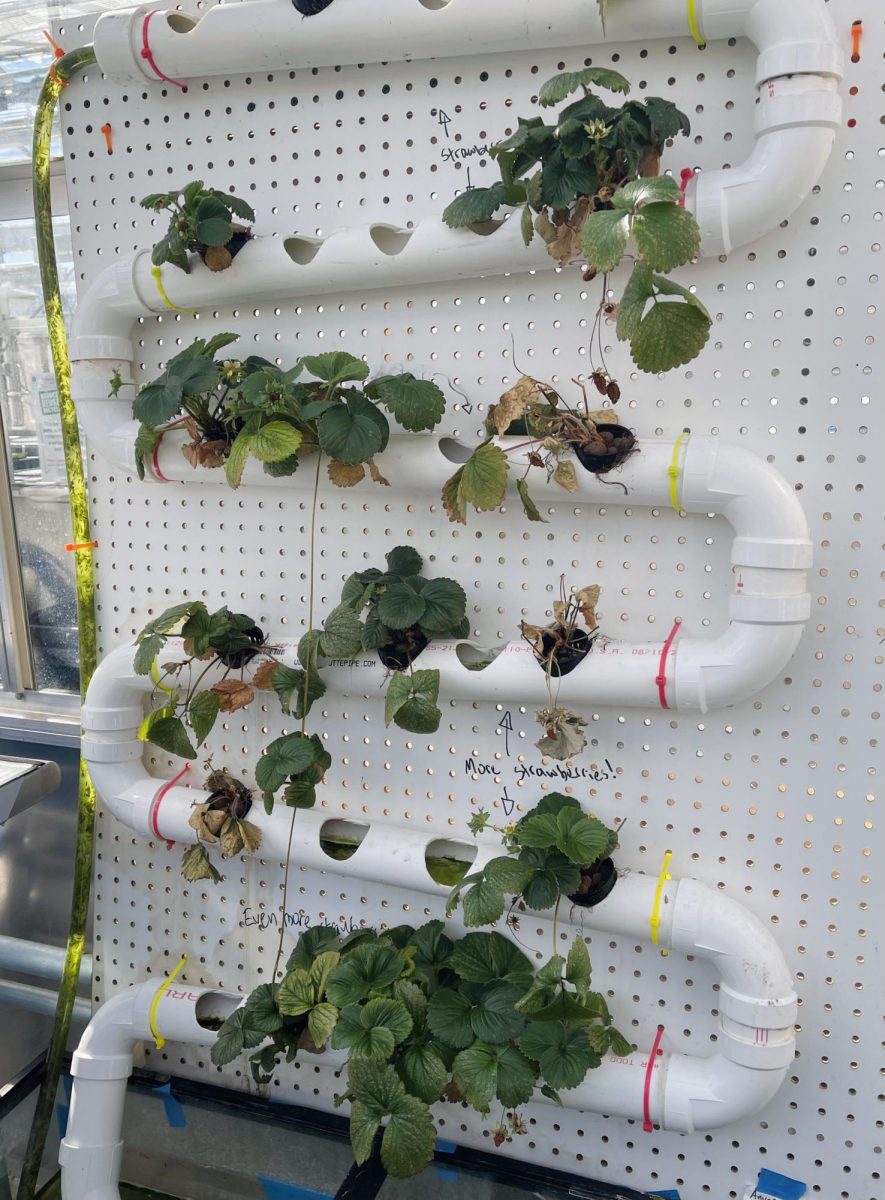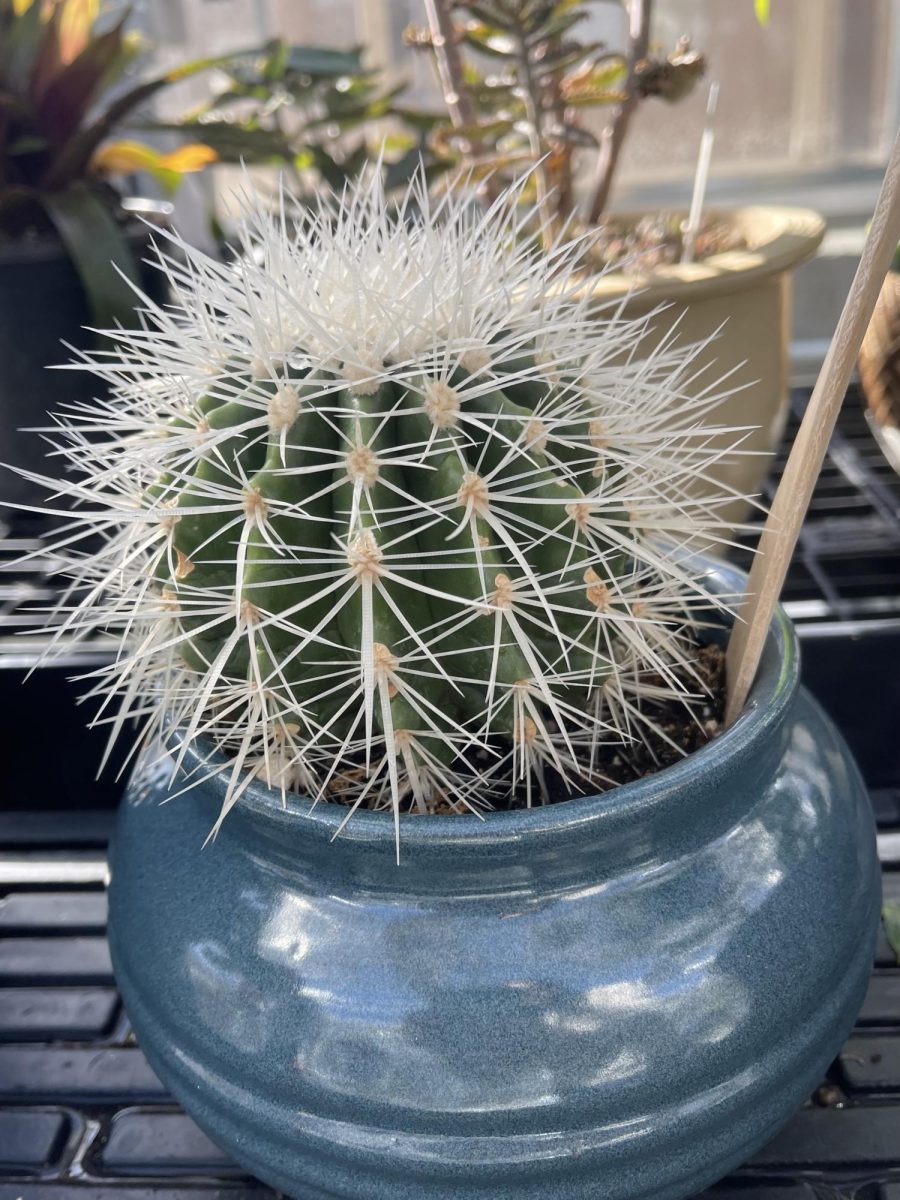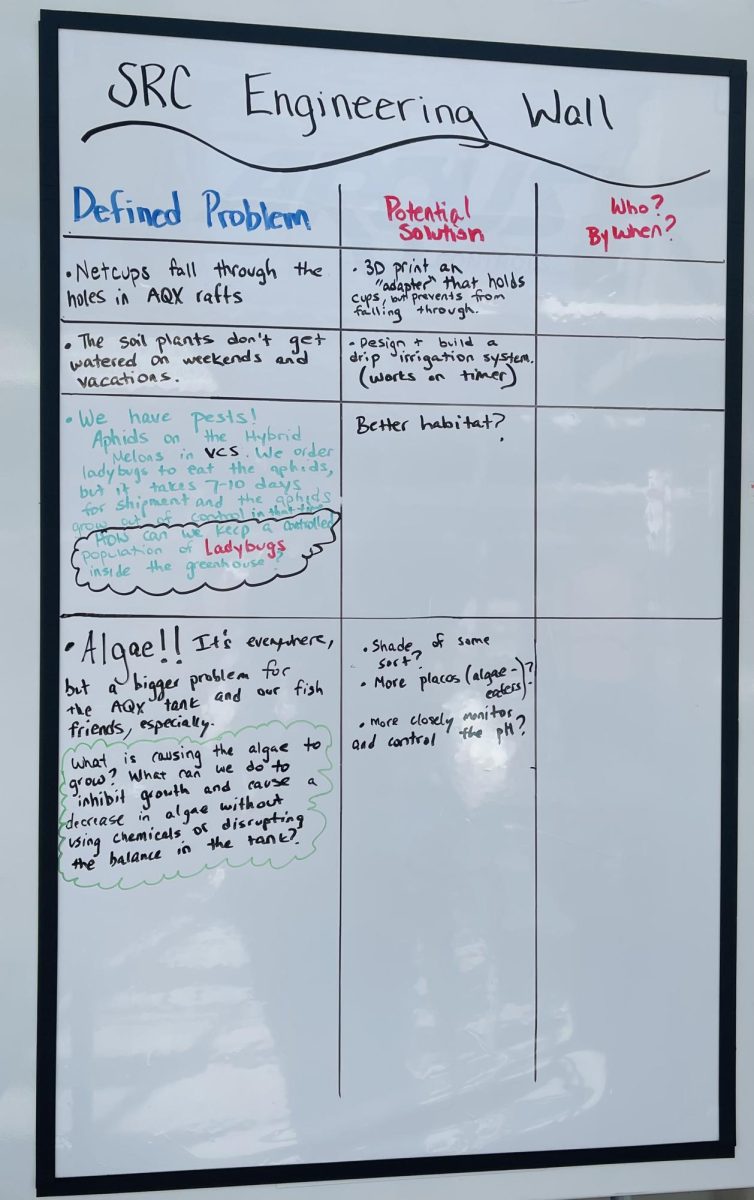Sustainability Research Center Photo Essay
Welcome to Greeley’s Sustainability Research Center, where innovation, sustainability, and community converge. Here, students have the opportunity to learn about a wide variety of plants, sustainable agriculture methods, ecosystem dynamics, and more in a hands-on, community-oriented method.
The SRC’s fellowship program, led by Mr. Olive, consists of a team of students who manage greenhouse functions, reach out to other student communities, conduct independent studies, grow new plants, and maintain old ones.
So far, Greeley’s other communities have put the SRC to good use: the APES classes have used it to perform experiments and learn about the environment through first hand experience, the Jewish Student Union has collaborated with the Fellowship for International Day, and currently, the Forest Preservation Club is working with the Fellowship members to promote Earth Day.
Without further ado, let’s take a look into the mini-ecosystem within Greeley’s SRC.
Above is the SRC’s Hydroponics sector. Hydroponics is the practice of growing plants using a water-based nutrient solution rather than soil. This system encourages faster growth, larger yields, and higher-quality plants. In the beginning, plants start off in a soil substrate such as rock wool (depicted in the bottom left corner). When they grow enough, they are then transported into one of the hydroponic systems (depicted in the top left). In addition, the hydroponics section must be strictly kept away from the soil-based plants. “Soil tends to contaminate the hydroponics,” Mr. Olive says. “I’m sure leaving a pot of soil here once in a while won’t be the end of the world, but we try to keep them separate.”

After the plants grow roots in the rock wool, they are transported into a cup and placed into one of the systems above. The one on the left works by pulling nutrient-filled water from the basin below through the pipes where the plants sit. “These [the pipes] are ever so slightly tilted, so it just flows down, pulls up the nutrients and the water, and that just drops back into the reservoir, sets up a little cycle. This is like set and forget it, nice and easy.” Mr. Olive says. In addition to being easy to take care of, the constant cycling of water allows the plants to receive a supple amount of oxygen as well. The ones in the middle and on the right work similarly; water is pumped to the top, then cascades down the pipes, watering the plants and providing them with nutrients.
Although hydroponics are very efficient, they require daily care and maintenance. Thus, the SRC uses a variety of instruments to measure different levels of nutrients in the plant’s water, and then determine what needs to be added. “We got pens that measure the pH, the electroconductivity…” Mr. Olive describes. “if they’re leafy greens you need more nitrogen, if they’re flowering you need more phosphorous. You test it as regularly as you can and if it’s low, you just add a little bit more and just keep it in the range.” In addition, the SRC also makes sure to maintain its humidity levels with the Argus Controls and the wet curtains, which use a pump to circulate water through the wall and a fan on the opposite side of the wall to cool the evaporated water.
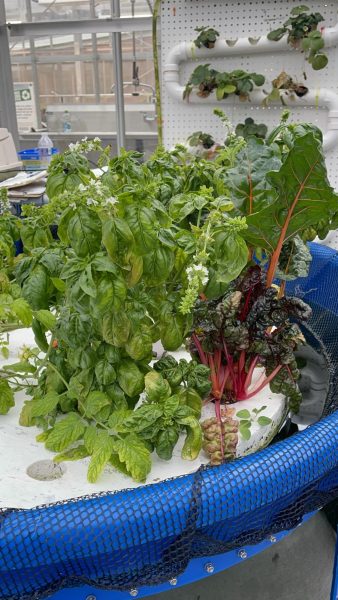
A picture of the SRC’s aquaponics section, where six tilapia fish live. These fish produce waste, which nitrifying bacteria then convert into nitrates to fertilize the plants. “It’s basically like an ecosystem,” Anwen Cao, a member of the SRC’s Fellowship, says.
The SRC’s soil-based plant sector. In this section, students grow a variety of potted plants, including cacti, bamboo, oranges, flowers, succulents, and even carnivorous plants. According to Mr. Olive, the carnivorous plants have done well to catch pests such as fungus gnats, and whiteflies, but haven’t been able to control the aphids – harmful, sap-sucking insects – because aphids don’t fly.
Despite the SRC’s advanced technology and incredible plants, it still has a few issues to solve, including net cup size, plant care during weekends and breaks, algae, and especially pests. The image on the right depicts the shedded skins of aphids on a tomato plant. “We are managing the pests through biocontrol such as ladybugs and using marigolds to repel them, as well as soapy water to kill the soft-bodied insects.” Jenna Rosenberg, a junior student in the SRC fellowship, says.

